As a highly developed country, Japan's contribution in the field of environmental science and technology cannot be ignored. In recent years, a new environmental protection material called "wood plastic decoration material" has emerged in the Japanese market, and has received the attention and pursuit of consumers. It is environmental protection, practical, beautiful characteristics, is gradually changing people's home life.
We need to understand what is wood plastic decoration material. Wood Plastic decorative materials, also known as Wood Plastic Composites (uk WPC), is a composite material made from a mixture of wood fibers and plastics. The emergence of this material not only solves the problem of the shortage of wood resources, but also uses waste plastics to realize the recycling of resources.
Japan's wood-plastic decorative materials are known for their environmental protection. On the one hand, the production process of this material reduces the dependence on forest resources and is conducive to protecting the environment. On the other hand, since one of its main components, plastic, is from recycled waste, the use of wood-plastic decorative materials can effectively reduce the generation of waste and have a positive impact on environmental protection.

Wood-plastic decorative materials also have good practicability. It is waterproof, moisture-proof, corrosion-resistant, moth-resistant and other characteristics, making it excellent in outdoor environment, especially suitable for parks, gardens, open-air restaurants and other places of decoration. At the same time, its wear resistance is strong, high hardness, not easy to deformation, and its service life is far beyond the traditional wood products.
The appearance and feel of wood-plastic decorative materials are very similar to natural wood, which can meet consumers' pursuit of natural beauty. It can be designed through various colors and textures to adapt to different decoration styles, whether it is modern simple or retro elegant, it can be easily controlled.
Of course, everything has two sides. Although wood plastic decorative materials have many advantages, there are also some problems in the production process. For example, most of the current production of wood-plastic decorative materials still requires the use of some chemical additives, which may have an impact on the environment and human health. In addition, due to the need for a lot of energy in the production process, how to reduce energy consumption and improve production efficiency is also an important issue facing the wood-plastic decorative materials industry.
With the advancement of science and technology and the increase of environmental awareness, Japan has begun to develop more environmentally friendly production methods, such as the use of biodegradable additives, the use of renewable energy such as solar energy, which are expected to solve the above problems. At the same time, the Japanese government is also actively promoting the application of wood-plastic decorative materials, through policy guidance and financial support, to promote the development of this industry.

Japan's wood-plastic decorative materials with its unique advantages are contributing to our environmental protection cause. It not only changes our way of life, but also leads a green and environmentally friendly life concept. In the future, with the development of science and technology and the improvement of environmental awareness, wood-plastic decorative materials will have broader prospects for development.
Here, we look forward to Japan in the field of environmental protection technology can continue to innovate, to provide us with more high-quality, environmentally friendly wood plastic decorative materials, but also hope that consumers around the world can pay more attention to environmental protection, choose this environmentally friendly decorative materials, and jointly protect our earth home.
We need to understand what is wood plastic decoration material. Wood Plastic decorative materials, also known as Wood Plastic Composites (uk WPC), is a composite material made from a mixture of wood fibers and plastics. The emergence of this material not only solves the problem of the shortage of wood resources, but also uses waste plastics to realize the recycling of resources.
Japan's wood-plastic decorative materials are known for their environmental protection. On the one hand, the production process of this material reduces the dependence on forest resources and is conducive to protecting the environment. On the other hand, since one of its main components, plastic, is from recycled waste, the use of wood-plastic decorative materials can effectively reduce the generation of waste and have a positive impact on environmental protection.

Wood-plastic decorative materials also have good practicability. It is waterproof, moisture-proof, corrosion-resistant, moth-resistant and other characteristics, making it excellent in outdoor environment, especially suitable for parks, gardens, open-air restaurants and other places of decoration. At the same time, its wear resistance is strong, high hardness, not easy to deformation, and its service life is far beyond the traditional wood products.
The appearance and feel of wood-plastic decorative materials are very similar to natural wood, which can meet consumers' pursuit of natural beauty. It can be designed through various colors and textures to adapt to different decoration styles, whether it is modern simple or retro elegant, it can be easily controlled.
Of course, everything has two sides. Although wood plastic decorative materials have many advantages, there are also some problems in the production process. For example, most of the current production of wood-plastic decorative materials still requires the use of some chemical additives, which may have an impact on the environment and human health. In addition, due to the need for a lot of energy in the production process, how to reduce energy consumption and improve production efficiency is also an important issue facing the wood-plastic decorative materials industry.
With the advancement of science and technology and the increase of environmental awareness, Japan has begun to develop more environmentally friendly production methods, such as the use of biodegradable additives, the use of renewable energy such as solar energy, which are expected to solve the above problems. At the same time, the Japanese government is also actively promoting the application of wood-plastic decorative materials, through policy guidance and financial support, to promote the development of this industry.

Japan's wood-plastic decorative materials with its unique advantages are contributing to our environmental protection cause. It not only changes our way of life, but also leads a green and environmentally friendly life concept. In the future, with the development of science and technology and the improvement of environmental awareness, wood-plastic decorative materials will have broader prospects for development.
Here, we look forward to Japan in the field of environmental protection technology can continue to innovate, to provide us with more high-quality, environmentally friendly wood plastic decorative materials, but also hope that consumers around the world can pay more attention to environmental protection, choose this environmentally friendly decorative materials, and jointly protect our earth home.










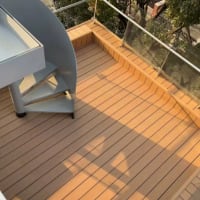

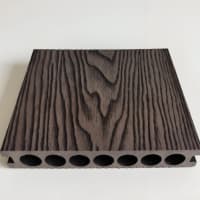



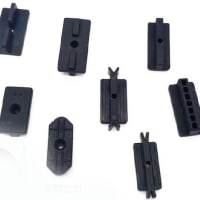
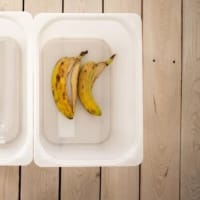

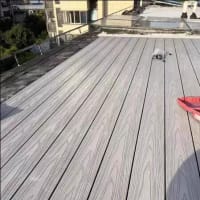
※コメント投稿者のブログIDはブログ作成者のみに通知されます